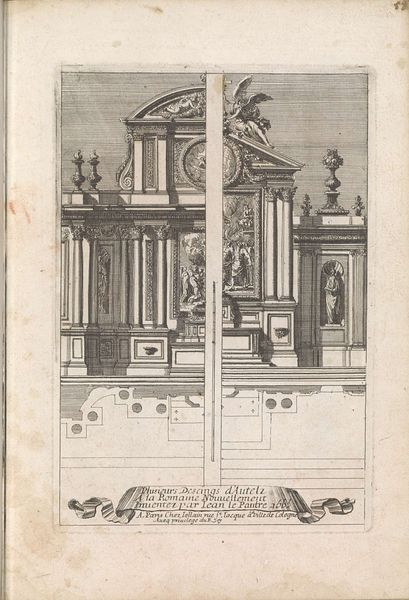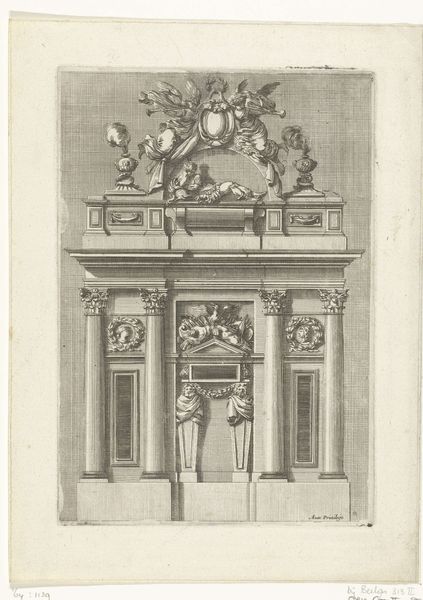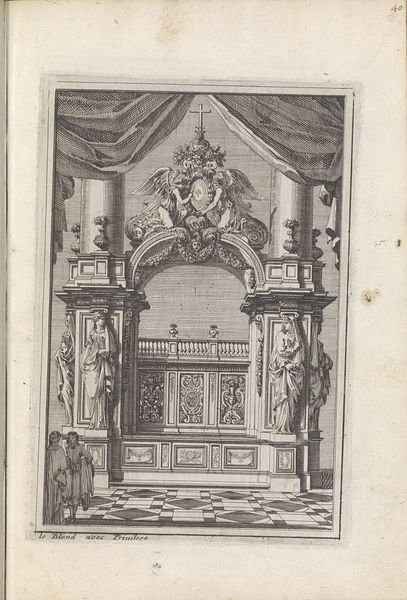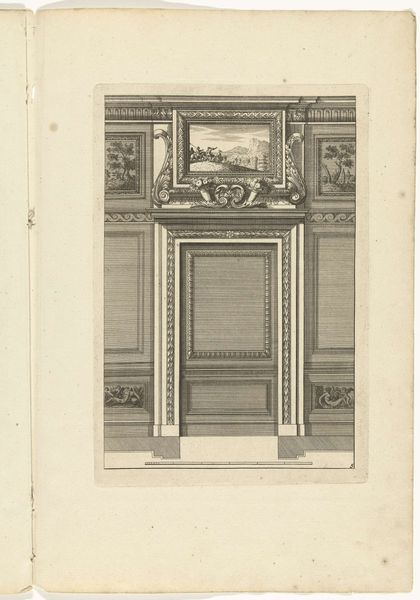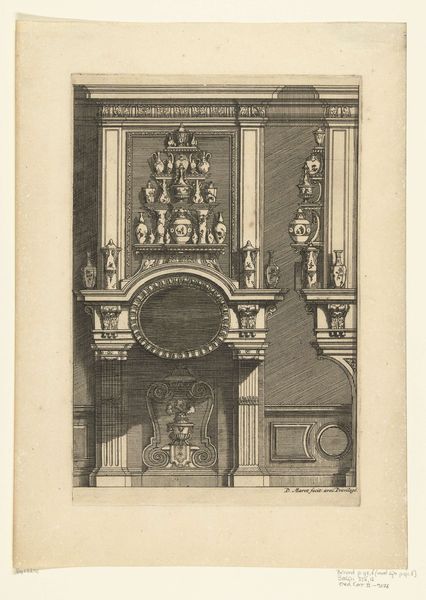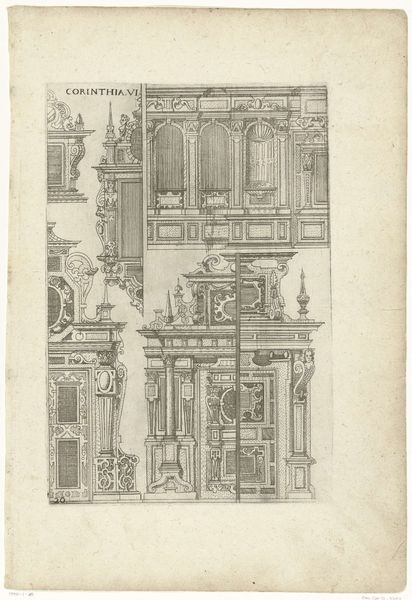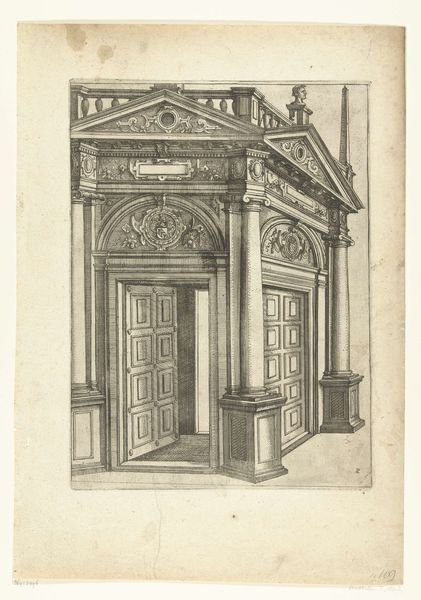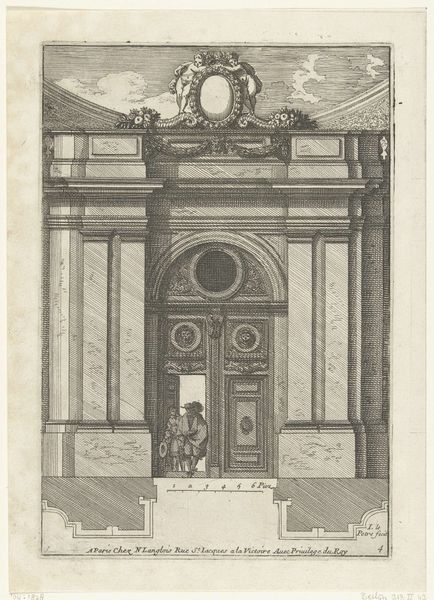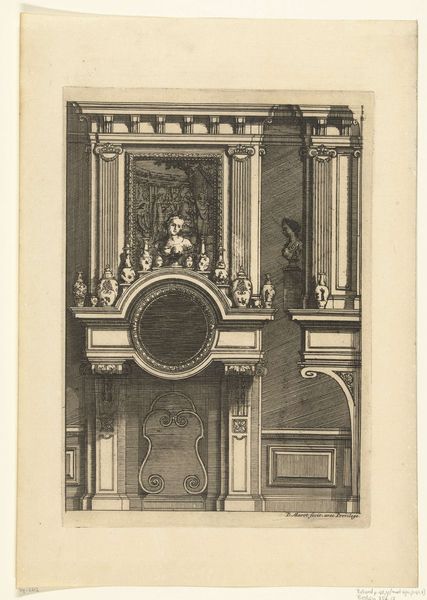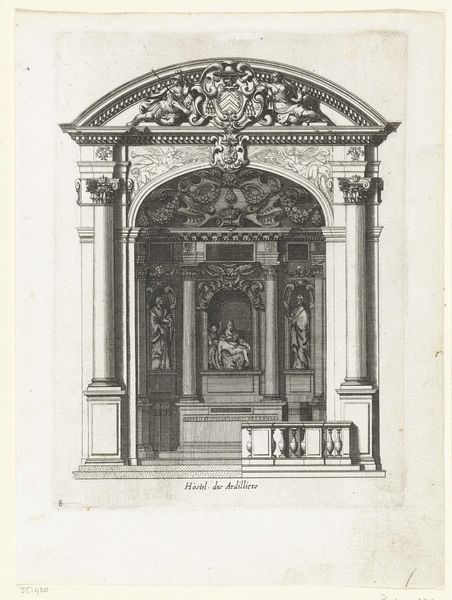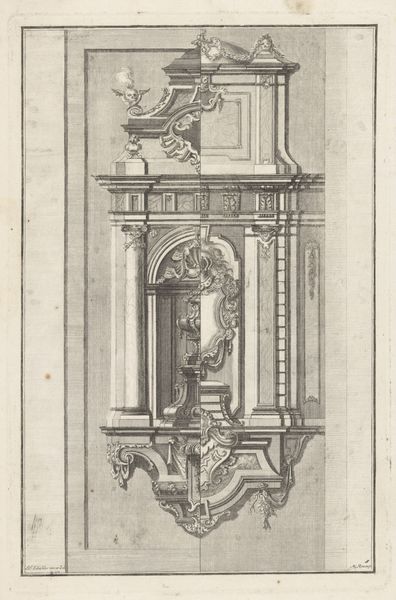
drawing, pen, engraving, architecture
#
architectural sketch
#
drawing
#
aged paper
#
toned paper
#
light pencil work
#
baroque
#
parchment
#
old engraving style
#
sketch book
#
personal sketchbook
#
geometric
#
pen-ink sketch
#
pen work
#
pen
#
history-painting
#
engraving
#
architecture
Dimensions: height 217 mm, width 146 mm
Copyright: Rijks Museum: Open Domain
Editor: This is "Twee altaarontwerpen," or "Two Altar Designs," by Jean Lepautre, from 1665. It's a drawing, actually an engraving in pen on paper, held at the Rijksmuseum. It reminds me of architectural renderings, almost like blueprints. What strikes you when you look at this piece? Curator: Well, immediately, I'm drawn to its depiction of power and patronage. Altars weren't just religious fixtures; they were statements. Who commissioned these designs? What church or institution were they intended for? Lepautre, working in the Baroque style, clearly understands how architecture could be wielded as a tool for social and religious influence. Look at the detail; the theatricality of the design… How do you think the socio-political climate influenced Lepautre’s designs? Editor: That's fascinating! I hadn’t considered the political aspect so directly. It does seem quite extravagant for a simple place of worship. Was there a specific religious or political message conveyed through altar design at this time? Curator: Absolutely. In the 17th century, the Catholic Church was reasserting its authority after the Reformation. The Baroque style, with its drama and grandeur, became a key tool in that effort. Altar designs like these, lavish and imposing, were meant to inspire awe and reinforce the Church’s power and importance. They speak volumes about the institution’s wealth, power and the public’s expectations. Editor: So the altar isn’t just functional but a carefully crafted message? I hadn’t really thought of it that way. Curator: Precisely. It's about the politics of imagery and how art served a very public role. Examining Lepautre’s designs provides insight into the dynamic interplay of art, power and religion of the period. It also emphasizes the significance of architecture in 17th-century society and politics. Editor: Wow, that gives me a whole new appreciation for what I'm seeing. Thank you! Curator: My pleasure. It is always valuable to consider art beyond its surface aesthetics to really understand how societal forces shape and define artistic practices.
Comments
No comments
Be the first to comment and join the conversation on the ultimate creative platform.
